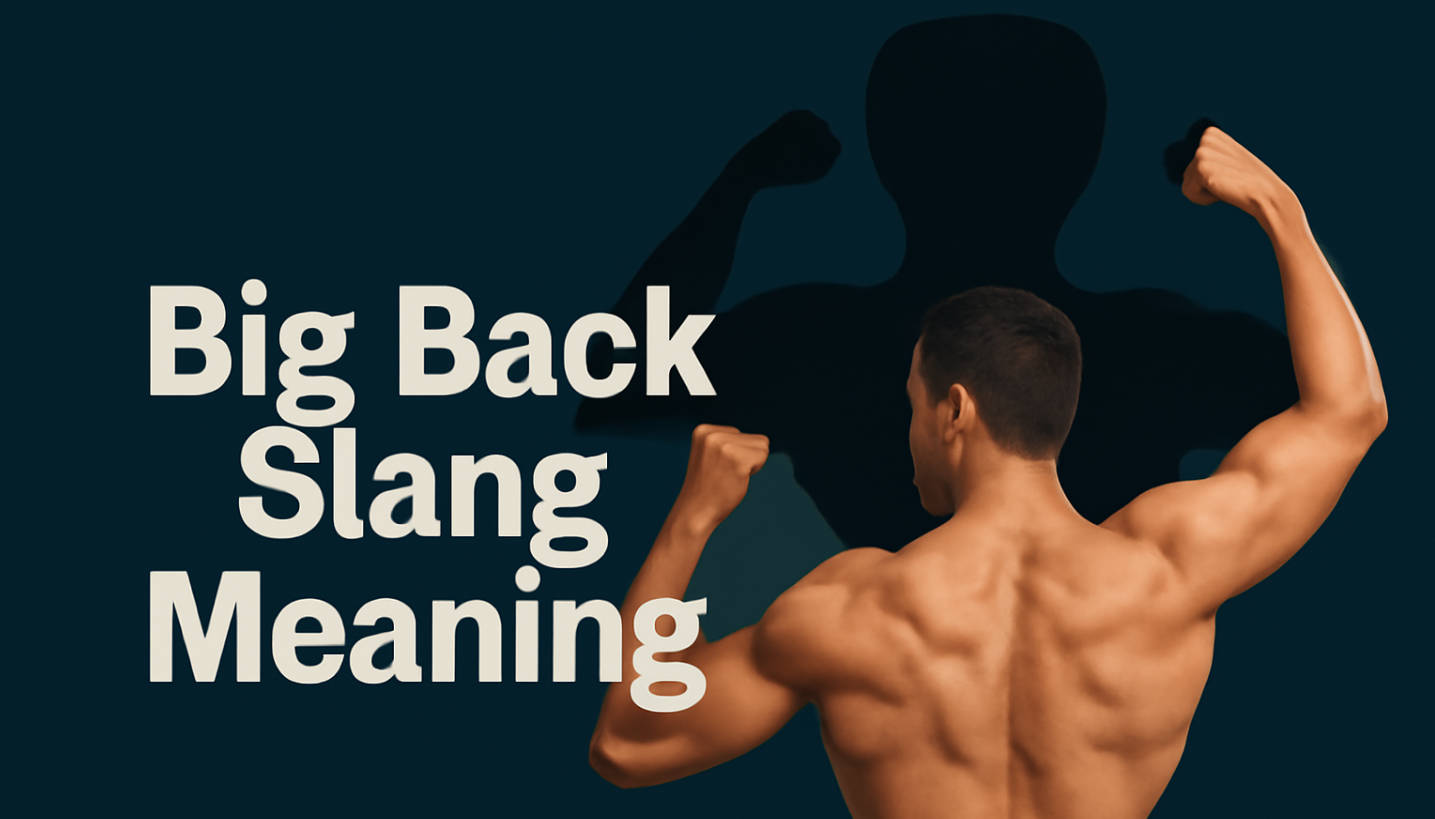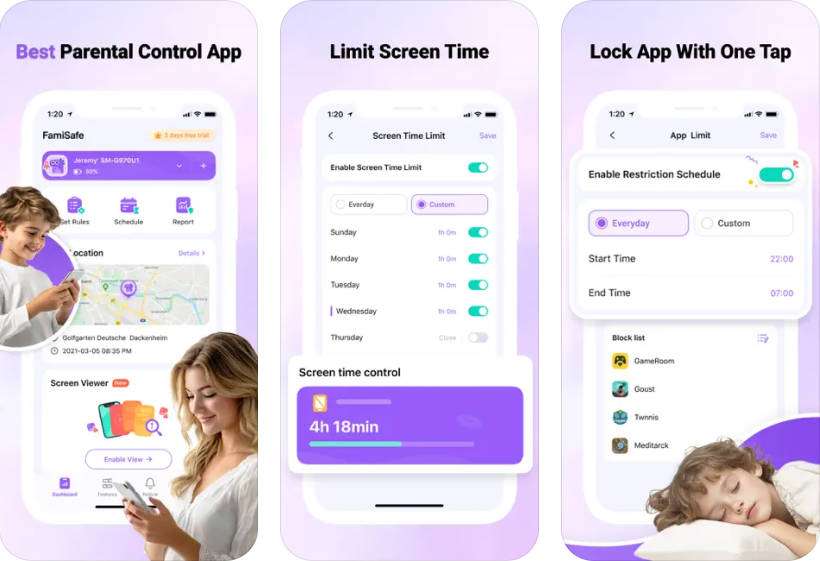In the fast-paced world of social media, new slang and trends emerge daily. One such term gaining popularity is “Big Back,” especially on platforms like TikTok. Teens are increasingly using this phrase, but what does it mean, and why has it become such a significant part of youth culture? In this article, we’ll delve into the meaning of “Big Back,” explore its social impact, and examine how it affects teens’ body image and interactions online.

Table of Content
Part 1. What Is the Meaning of “Big Back”?
""Big Back"" is a slang term that refers to someone with a large or prominent back, often used to compliment physical strength or presence. It is especially common in youth culture and has emerged as part of the body-positive movement, celebrating muscular or broad backs as symbols of strength and power. However, the phrase can also be used in a playful or teasing manner, and its meaning can vary depending on the context in which it is used.
Some may use it to describe someone with noticeable physical features, while others may use it as a joke or to point out someone’s stature. In any case, “Big Back” is often associated with a strong, confident persona—something many teens might admire or aspire to.
Part 2. How “Big Back” Is Used on Social Media
On platforms like TikTok, “Big Back” has become part of a viral trend that encourages people to embrace their physical form, particularly focusing on strength and confidence. Users incorporate the term in memes, challenges, and dance videos, often paired with hashtags like #BigBackChallenge or #BigBackVibes. These trends promote positive body image, but they also emphasize physical appearance, which can lead to both positive and negative consequences for teens.
This trend has spread across social media platforms, including Instagram and Twitter, where it is often used as part of broader body positivity or strength-affirming content. However, it can also inadvertently perpetuate unrealistic body standards, particularly for young audiences who may feel pressure to meet certain physical ideals.
| Context | Description | Risks |
| Fitness & Bodybuilding | “Big Back” is often used to describe someone with a well-developed, muscular back, typically in fitness or bodybuilding communities. | Can perpetuate unrealistic body standards and muscle obsession. |
| Body-Positive Content | Some influencers use “Big Back” in a body-positive context, celebrating strength and size diversity in a supportive way. | Could lead to body comparisons and pressure to conform. |
| Teens & Peer Interactions | Among teens, it can be a playful or teasing term used to acknowledge someone's physical appearance, often in group chats or on social media. | May promote insecurities in teens who feel they don’t match these standards. |
| Memes & Challenges | “Big Back” becomes part of viral meme challenges on platforms like TikTok, where users jokingly participate in the trend by showing off their physique. | Encourages the normalization of body-shaming or physical competition. |
Part 3. What Do Kids Mean When They Say ‘Big Back’?
When teens use the term “Big Back,” they are typically referring to someone with a prominent, muscular back, using the phrase as a compliment or form of admiration. In some cases, the term is used teasingly or jokingly within peer groups, which can impact how it’s perceived in different contexts. For some, it’s a term of endearment, while for others, it might serve as a way to point out someone’s physicality, which could lead to body-consciousness or self-esteem issues.
Importantly, “Big Back” can have different meanings depending on the culture of the group using it. For instance, in bodybuilding communities, it may be a more serious acknowledgment of physical achievement, while in casual teen circles, it could be used in a light-hearted or flirtatious way. As teens embrace such terms, it’s important to recognize that body image and the way we talk about physical appearance can have profound effects on self-esteem and social acceptance.
Part 4. Is “Big Back” a Positive or Negative Term?
While “Big Back” can be seen as a compliment, celebrating strength and physical presence, it can also have negative implications in some contexts. On one hand, the term encourages body positivity, helping individuals embrace their strength and appearance. On the other hand, the emphasis on physical attributes might inadvertently contribute to the growing pressure to conform to certain body standards, especially in the context of social media.
For teens, constantly being associated with their physical features can lead to heightened self-consciousness, particularly when their bodies don’t align with the idealized image often portrayed online. The positive effects of this phrase depend on how it is used and the environment in which it’s shared. While it’s important to promote body positivity, it’s equally essential to ensure that body standards aren’t creating undue pressure for those who don’t fit the mold.
Part 5. How to Protect Teens from Social Media Trends Like “Big Back”?
As trends like “Big Back” continue to gain popularity, it’s crucial for parents to guide their children in navigating social media safely. Encouraging teens to engage with content that promotes self-love and body positivity, while setting healthy boundaries, can help prevent negative effects on their mental health.
Open communication is key—discuss the dangers of body-centric trends and how they can impact self-esteem. Setting limits on social media usage and fostering a body-affirming environment can help teens feel empowered and secure. Parents can also leverage parental control tools like FamiSafe to monitor social media interactions and prevent exposure to harmful trends.

📱 Monitor Social Media Activity
Keep track of the platforms your teen is using and how they engage with content related to body image. Regular check-ins will ensure they are consuming healthy, positive content.
🚫 Prevent Harmful Interactions
Use FamiSafe to block access to platforms that promote negative body image or self-esteem issues, helping to create a safer online environment for your teen.
⏳ Set Boundaries for Social Media Usage
Establish screen time limits and restrict access to certain apps or content, promoting a healthy balance between online and offline activities. By setting these boundaries, you’re giving your teen the tools to navigate social media responsibly.
Conclusion
Trends like “Big Back” may seem fun and harmless, but they come with important considerations for body image and self-esteem, especially for teens. By promoting healthy, positive social media engagement and using tools like FamiSafe to monitor and control online behavior, parents can help their teens navigate these trends safely. It’s essential to support teens in feeling confident about their bodies without the pressure to meet unrealistic standards.


